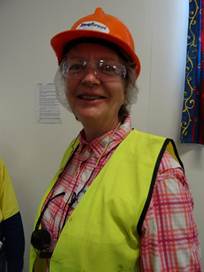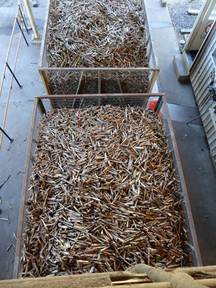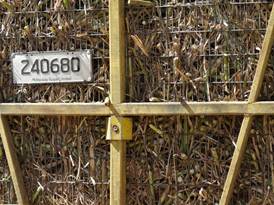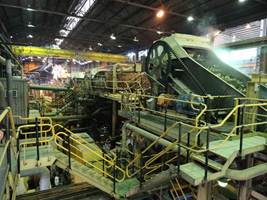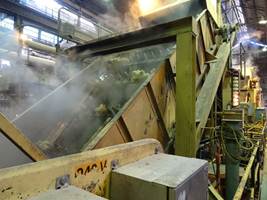Mackay - Sugar Mill Tour 1

We went on a sugar mill trip today – one of the best tours we have done so far. The tour actually went inside the working Farleigh Mill, up and down the walkways, hard hats, hair nets and yellow vests. Built in 1883 by Sir John Bennett Laws, founder of Rothamsted agricultural research station in the UK.
Feel sure that the tour will not last for much longer when H&S get their hands on it. The tour guide was a sugar farmer’s daughter, her partner was a sugar farmer and so we found out a lot about sugar farming. You are also going to learn something from the bits I can remember. In Mackay area the cropping time is June to December. They don’t go in and crop an entire farm in one go but rotate between farms. The first cut is 10%, then 30% then I can’t remember the rest of the percentages. In some areas the sugar cane is loaded into lorries, or dumped into railway carts, and then trundled off to the mill.
All the railway carriages are numbered and pre-weighed. Somewhere there must be a railway control room that designates a number of carriages to each farm for a particular cut. The mill, or farmer (not sure which) estimates the volume of the crop and the appropriate number of carriages arrive. The crop has to be squished within 16 – 24 hours. If they go past that time, when the mill breaks down, then the farmers are compensated for their crop. Anyway, the carriages arrive at the mill and are weighed.
The carriages are upended and the sugar cane tipped onto the cane carrier - conveyor belt – which takes the crop to a shredder, which chops and shreds the cane into fibrous material. The farmers crop is tallied up, $45 per ton, 750 tons per hectare. Payment comes 4 weeks later.
The shredded sugar cane is fed up to crushers, water is added at various stages to get as much sugar/juice as possible.
The water is evaporated off at the end of the process so there’s a lot of steam (and heat) about. On the RHS is the dirty sugar liquid being squeezed from the fibrous sugar cane in the crusher. The remaining fibrous material (bagasse) is used as fuel in the mill boiler furnace.
This is bagasse (the crushed, macerated fibres) on the conveyor belt. All the fibre is either burned during the sugar making process or stored for next year’s cane harvest. The mill makes all its electricity and steam power, burning the fibres. The mill supplies the town with about 10% (think she said) of its power.
It must be incredible boring, repetitive job working in the mill.
The sugar juice contains lots of impurities which are removed by adding lime and boiling the juice. Muddy juice extracted from the clarifies is filtered in these huge cylindrical rotation vacuum filters. The mud and bagasse (filter mud) are used as fertilizers. The bagasse has nutrients added and then spread back onto the fields.
|

